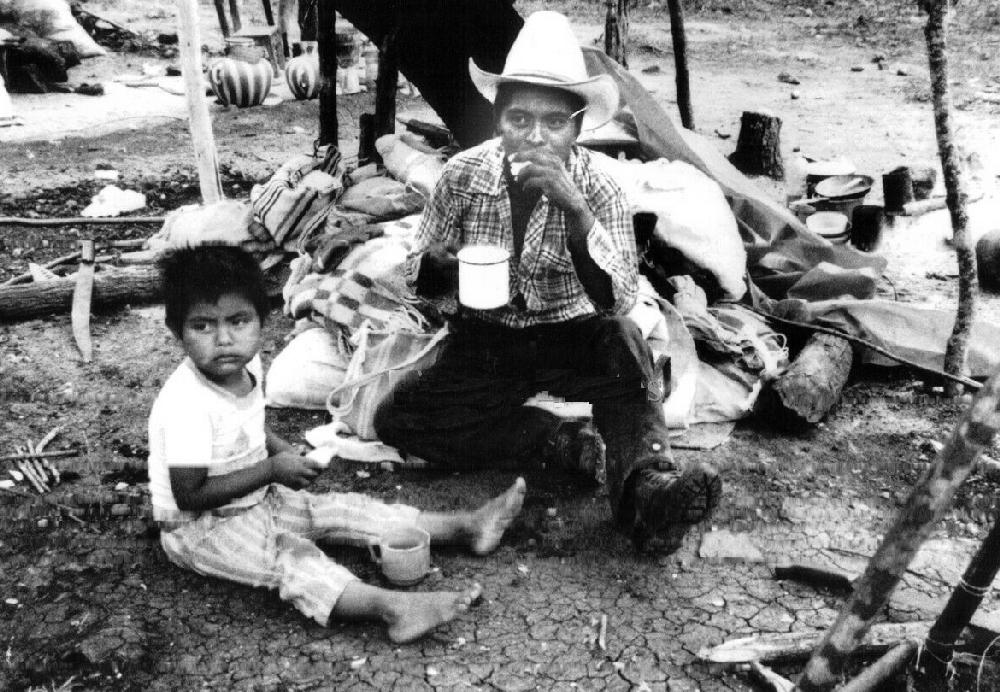
Cold War Refugees: Central American Northern Triangle Background (1970s-80s)

Figure 1.-- Latin America for the most part by the advent of the Cold War had been independent for more than a century. Yet they had not achieved material success like North Amrrica. One of the poorest regions of Latin America was Central America. On additiin to the Spanish colonial heritage. Another is the subrtantial ikndifenous population which had been exploited by both the Spanisg and criillo Spanish origin) elites during the independence era. In addition there were no important natural resources to export like most of South American countries. Notice than none of these conditions have anything to do with the United States. Iy is trye that the American United Friit Compamy basically joined the land-holding elite to resist reforms. But the problems of Central America ir not unique to Latin America. they are basically the sme we see in the karger countries of South America in which the united States has has reltively limited influence. Here we scene a scene at La Gloria, some place in the Nirthern Triangle. The writing on the back describes the scene as regugees without any furher details.
|
|
Central America was dominated by land owning forces which for years resisted change and reform and resorted to brutal violence. The situation was especially acute in the northern Central American countries south of Mexico -- the northern triangle (Guatemala, Honduras, Nicaragua, and El Salvador). The situation and ensuing developments varies in each of the four countries, but there were considerable similarities. These were countries with substantial indigenous populations which did not participate in the national society. All were a small part of the vast Spanish Empire, usually ruled from Mexico City. The Spamish Empire was financed by the duscovery of vast silver resources in Bolivia and Mexico. One aspect of Spamish Imperial rule was that the colonies existed for the nenefit of Spain. Industry was basically prohibiyed. The colonies were to buy manufactured goods from Spain not produce them and compete with Spain. Independence did not sugnificantly change the economic and social system. The region continued to primarily be africultural and a producer of raw materials. And the prospects of the vast proportion of the population. The countries continued to be controlled by the large land owners and merchants in the still fairly small cities. There was virtally no omdistry. The bulk of the population was still in the countryside. There were farmers with small plots, but many were kandless farm workers in large estats. Few of the children attended school. There was very littke investment in the principal resource -- their people. This was the genrral situation throughout Latin America. The economy in the Northern Triangle was agriculture. Control of the land by the latifundia, but inefficent agricultutral methods was also imprtant. In the Unites States, a farmer feeds something like 155 people. In Cebtral America a farmer feeds only a handful of peoole. This inevitavly affects the income and live prospects of the population. And the poor education and lack of a vibrant capitalist economy provide only limited prospects for those who manage to get an education, although this was not recognized by much of the population which by the mid-20th century had been attracted to Socialist economic ideas and Communist propaganda.
.
CIH

Navigate the Children in History Website:
[Return to Main Cold War Central Amerocan refugee page]
[Return to Main Cold War refugee page]
[Return to Main Cold War page]
[Return to Main 20th century refugee pahe]
[Return to Main Communism page]
[About Us]
[Introduction]
[Biographies]
[Chronology]
[Climatology]
[Clothing]
[Disease and Health]
[Economics]
[Freedom]
[Geography]
[History]
[Human Nature]
[Law]
[Nationalism]
[Presidents]
[Religion]
[Royalty]
[Science]
[Social Class]
[Bibliographies]
[Contributions]
[FAQs]
[Glossaries]
[Images]
[Links]
[Registration]
[Tools]
[Children in History Home]
Created: 4:57 AM 3/13/2020
Last updated: 4:57 AM 3/13/2020



